Nearly three decades after Scott Bakula‘s Sam Beckett made his final leap, NBC has successfully resurrected the classic series Quantum Leap, which now stars Raymond Lee as physicist Ben Song, who gets stuck in the past while leaping into the bodies of different people, which leaves him with partial amnesia about his identity. He’s joined by Caitlin Bassett as Addison Augustine, Ben’s fiancée and “observer,” who helps him find out what he has to do in order to leap.
As the Director of Photography on Quantum Leap, Ana M. Amortegui, ADFC works hard to balance the look of the show with whatever era its protagonist is visiting. In some cases, that’s an arduous task, but it’s also one that offers Amortegui unlimited creative opportunities that are often quite fun.
Below the Line spoke with Amortegui about her late introduction to the original series and the unusual training she received that led to her work behind the camera in television. She also discussed her work on Quantum Leap and how she aimed to honor its predecessor while still giving this “continuation” its own visual identity, plus she teased what’s ahead in Season 2, which is already in production.
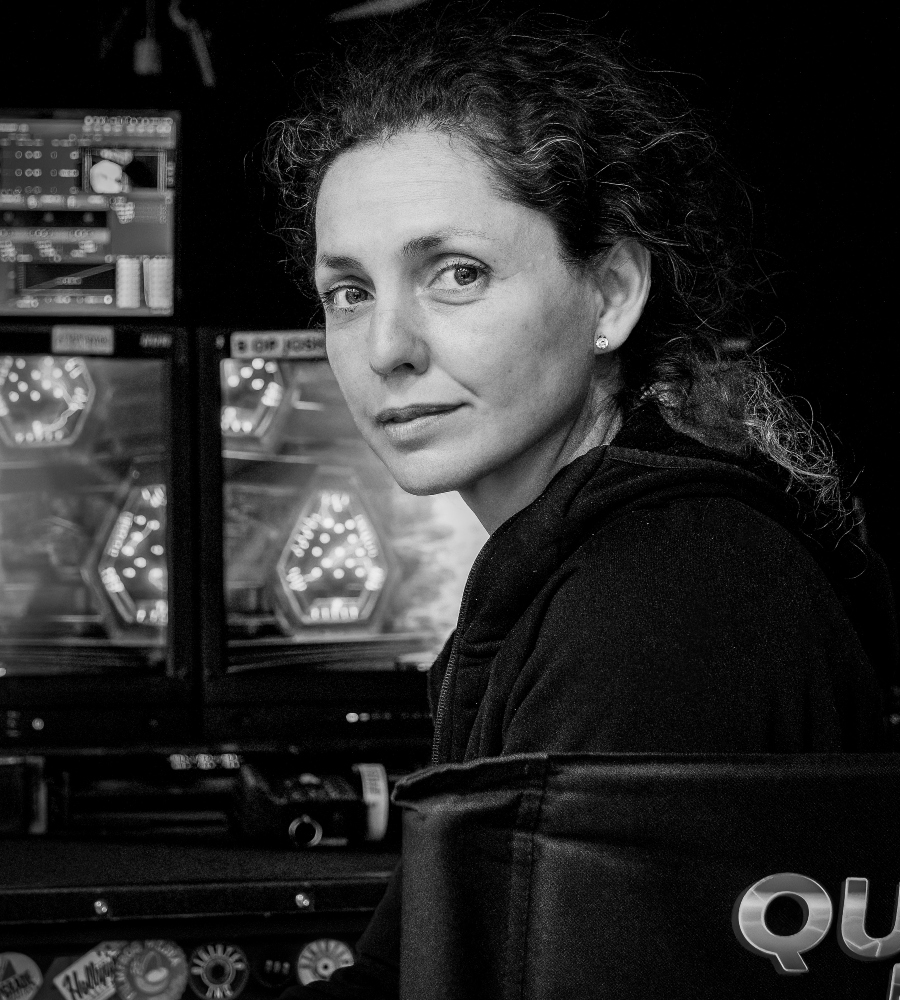
Below the Line: Did you grow up watching the original Quantum Leap?
Ana M. Amortegui: No, unfortunately, because I come from Colombia. The shows that we got back in the day were very sparse. I can remember Baywatch, Beverly Hills, 90210, and The A-Team, [but] we never got Quantum Leap over there. So when I got the offer to interview, I had to do a lot of research and watch a couple [of] episodes to understand what the message of the show was. It was very cool.
BTL: And what is the message of the show that you got from your sample?
Amortegui: I think the essence of the show is to put right [what’s] wrong. It’s also that longing for coming back home, whatever home means to you. It’s two separate stories — how do we do things right and help people and [not] leave anyone behind, and also Sam’s personal story of trying to get home to what feels like home to him.
BTL: How is the new show different from the original series?
Amortegui: When I got the interview and we started talking about the show, they told me right away that they didn’t want to copy how the show looked. The biggest reason was that they wanted to honor what Quantum Leap was. It was such a gorgeous, beautiful show that to this day, everyone [still] swears by. Everybody loves the original Quantum Leap. I didn’t think we wanted to do the same. We wanted to honor what it was. [So] it wasn’t a remake, it was a continuation.
The project reopened 30 years [later], and it became a new thing. It’s a new stage of that operation that was shut down 30 years ago. With the look, we wanted to do something different and make it more stylized. At the end of the day, when you do the leaps and you go back in time, we always want to keep a realness to everything, with the lighting and the units that we use, [and] with the camera movements. The leaps will always be what we have most in common when we go back in time.
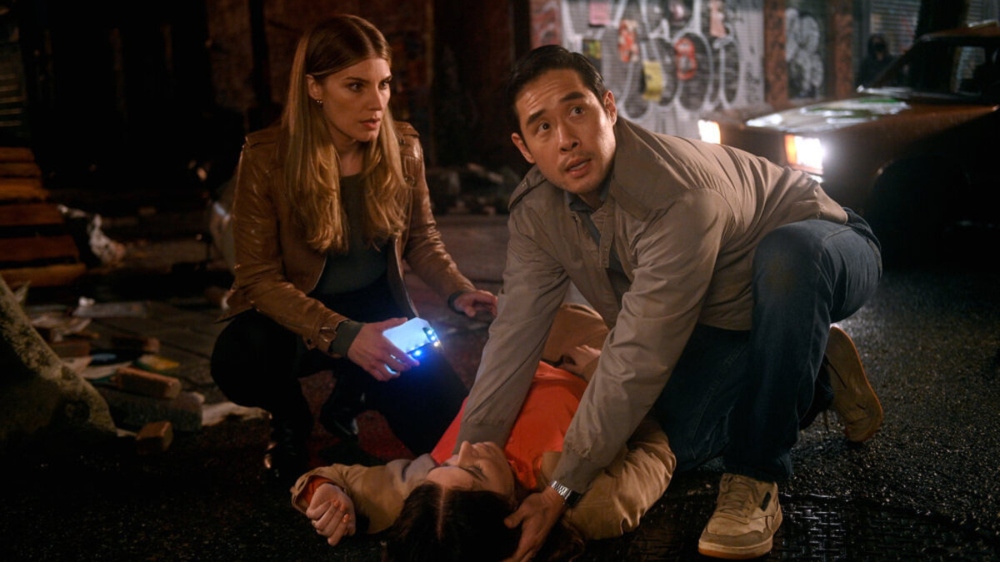
BTL: Were there any challenges you knew you’d face right off the bat?
Amortegui: We always open with an eye shot, and it took us a little bit, but we figured out how to do it faster. Nowadays, we [get] it in one take and it’s done. Before, we started with a different lens, and we were doing the rotation on-camera. Sometimes it does rotate, and sometimes it’s just a pullout. That was challenging to figure out.
Also, the reflections. We usually do those on camera. We have some VFX help but we do them on camera so it’s not just dependent on VFX. We are able to make them on camera. Those were challenging at the beginning, and we had to find our look and our visual style. Now, we’re shooting Season 2 and we have a more solid story and visual style.
BTL: What kind of technology do you use to achieve those things?
Amortegui: For the eye shots, we just do [them] now with a 50mm macro. It’s a very hard coordination between the First Assistant [Director] and the Camera Operator. I give them a lot of light, and then, with the operator, they coordinate and get really close to Ben and then pull back a couple of times until we get it right. Then, in post, they rotate it or they just leave it as it is. With the reflections, it’s actually really simple.
Back in the day, they would build a set behind and have the person mimic what Sam was doing. In our case, we just put our camera over Ben’s shoulder and it’s as simple as putting the other actor in front or to the side and then gimbal the mirror so that we’d miss Ben in the camera but you’d still have his over-the-shoulder. Or we can do a split-screen, or shoot A- and B-side. You’d shoot Ben and then shoot the reverse of the host. Now, we’ve gotten very good at just handling the mirror.
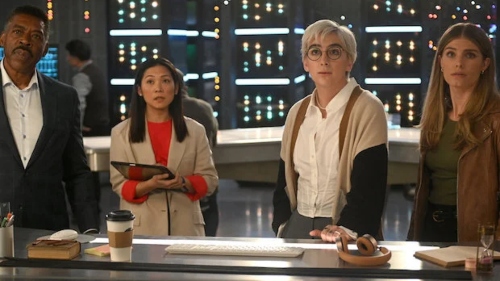
BTL: Did you have any favorite storylines that offered a fun opportunity to try something new?
Amortegui: The boxing episode was really special. It was [in] Vegas, which meant a lot of lighting, colors, and a boxing ring. We couldn’t go to a normal boxing stadium. We did it on one of our stages. We decked out the whole stage in black velvet, and then we set up the ring in the middle. I had to hang up 300 par cans because it was the ’80s. I couldn’t just put up the robotic lights or anything, so I used 300 par cans and then I gelled them.
Back in the ’80s, the rings never had color. The showrunners and I took some liberty to add some color to make it more interesting with a little bit more magic. We chose some colors and independently gelled every single light, and then I hid a couple of movers to help me a little bit with exposure and to get the light where I needed it because I only had three walls. I didn’t even have a full ring, because we just did an arch of light. It was too much.
I think that story was really beautiful, the story between two brothers. But at the same time, technically, it was very challenging because we needed to find the resources to make it work. It was a lot of labor, but it came out so beautifully. I love that one.
I loved the Western town, that was beautiful to shoot in. Shooting at Universal in the Western town that all the big movies have used, how do you honor that? How do you stand up to that challenge and make this very beautiful episode look like a beautiful Western? I think that’s the magic of this work. Every episode is shooting something new, something that takes you to the past. We do research, we try to be accurate with fixtures and how we use everything [and] how we light it. I think it’s a blessing. You get to do something different every time.
BTL: Was there ever a conversation that something might be too difficult to achieve, and that it wouldn’t work visually as part of a storyline?
Amortegui: Yes. I think the biggest enemy that we have is time. These are stories that are so gorgeous, but so much happens. We have so few days to shoot. At the end of the day, we do have to make a lot of sacrifices. We sometimes have to change the place we’re shooting, or we can’t have the crane, because it will take too long.
It’s good to have the right tools for the right things, but sometimes, because of time, we just have to simplify a lot and reduce or cut some pieces. Again, the essence of the show is to show the human side of him trying to make it right and the rest is an ornament to it. Sometimes, we sacrifice. Action sequences become smaller [and there will be fewer] explosions — more because of time than resources.
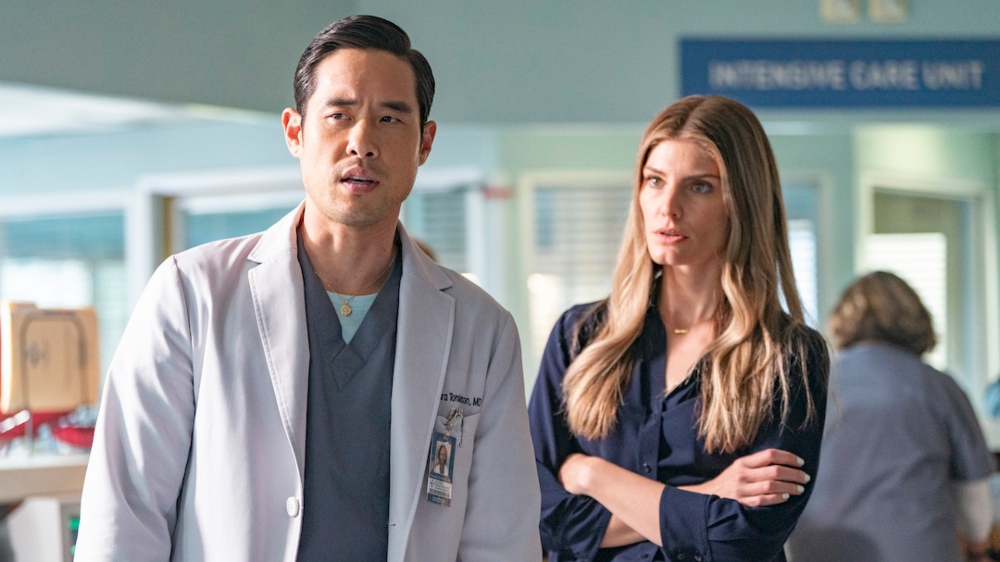
BTL: You’ve already started working on Season 2. Will you tweak your approach at all to distinguish it a bit?
Amortegui: It’s nice, because when everyone sees the finale of Season 1, a cycle is going to be closed. It’s like a little new beginning. Cinematography-wise, our creator wants to keep doing the same thing, [but] the journey for Ben is going to change. He’s the one who’s going to have the biggest change. Visually, we are going to keep it very similar. The headquarters will be the headquarters, and he’ll keep leaping back and forth. The essence stays the same, but his initial journey will change. His motivations are going to change. It’s a different time now — time to let go and start over. Visually, we’re staying the same, especially because we started [up again] right away.
BTL: You’ve also worked on another TV show I really enjoy, which is Resident Alien.
Amortegui: Oh my god, it’s amazing. I have to say something: it’s amazing because our showrunner, Chris Sheridan, is the most amazing person. He’s so humble, with such a huge heart. Everything that comes from him has to be good. The crew and the cast that we have, every day was fun. They shoot in Vancouver, which for me was great. To travel out of the country, I found a different culture, a different way of shooting, a different crew, [and] different landscapes. I had an amazing time.
The second season was really fun. It was always nice to be shooting that. I loved it because, even though it was a comedy, you could be creative because they have the sci-fi part, the little horror part. Alan Tudyk is amazing. It’s such a beautiful environment and such a beautiful show. They called me for Season 3, and I’m here so I couldn’t do it. They’re shooting right now, and it would have been great to go back and do part of it again.
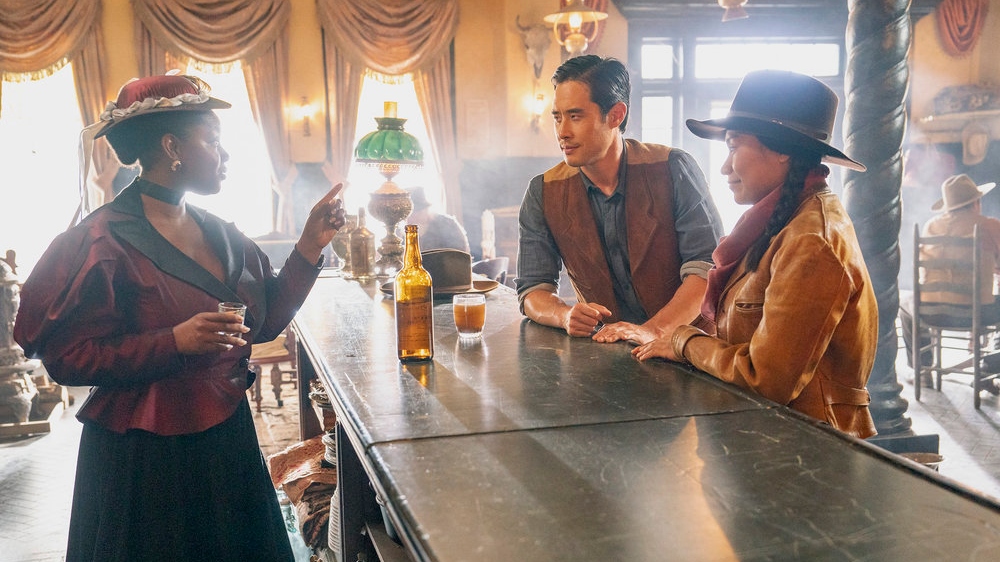
BTL: While the landscapes are obviously different, do you find that shooting in different countries affects your work very much?
Amortegui: I think it makes it better. Not just the physical locations, but the people that you find. It’s gorgeous to go and see and work in Atlanta [and] then go work in Vancouver, and you find all these amazing people. All their talent and everything add to your craft. I have always been very lucky. I was out of town for about two years working in other places, and for Quantum Leap, I came back to L.A. One of the best things is finding other people and [new] talent, and being able to adjust to anything different.
[In] Vancouver and other places with the cold and the rain, they do it so well. That’s the best thing. You are the outsider, but wherever you go, they’ve already got it figured out. You learn a lot. I learned how to shoot better in the snow and in the rain because they do it [so] effortlessly. Atlanta is a beautiful space, [and] New Orleans, too. You are the one [who] goes there, and you are the one [who] learns a lot from the rest of the people. You get a new family and friends. I like it a lot. It’s great!
BTL: You have a background as an electrical engineer and as a dancer. How do those things play into your work day-to-day?
Amortegui: I know, it’s crazy! They’re completely opposite. As an engineer, more than math and physics, you have to [be able to] solve a problem. You’ve got to come up with whatever you need in any situation. As a dancer, you use your body as a tool to express your emotions, or to express an idea. Even though they might not seem related, [my] background as a dancer has helped me express my emotions or my messages in a clearer and more transparent way.
Everything that I have… dancing gives you a lot of discipline, a lot of focus. You’ve got to be able to learn a lot while you do a lot of other stuff. You’re using your body but you’ve got to remember the next step, coordinate, and follow a group. It’s a lot of things at the same time. I don’t [really] use the math, but those skills [as an engineer] help you come up with ideas and find solutions. In a way, they all relate, and the experiences you’ve had only add to what you’re doing now. But yes, I think the way I came up as a DP is completely opposite from what anyone might think.
BTL: You’re working on Season 2 of Quantum Leap now. Do you have anything else going on at the moment or lined up for the future?
Amortegui: Project-wise, I’m solely dedicated to Quantum Leap right now. I’m here every day. While I shoot, the other DP preps, and then I go prep and then go to shooting. I’ve been here since June, so it’s been almost a year that I’ve been on this project. I’m always open and willing to go farther and get new opportunities. I’d love to shoot features and things like that, but right now, I’m solely focused on Quantum Leap.
Season 1 of Quantum Leap is now streaming in full on Peacock.





